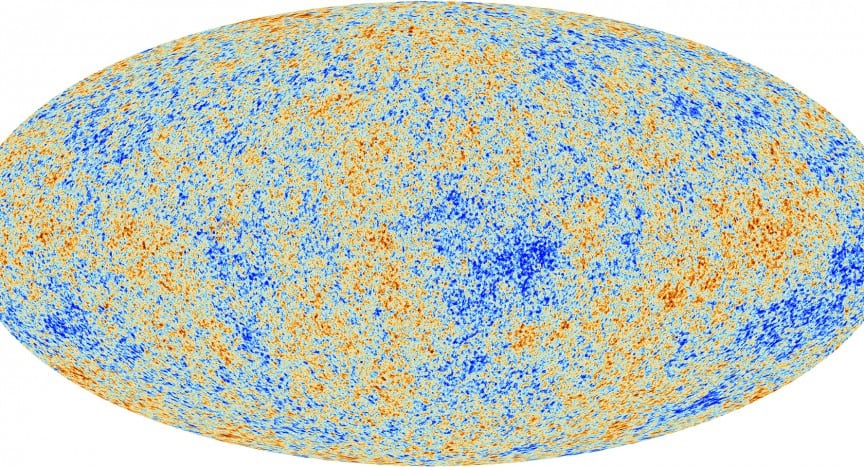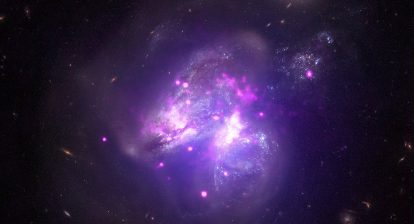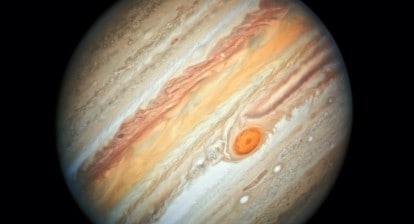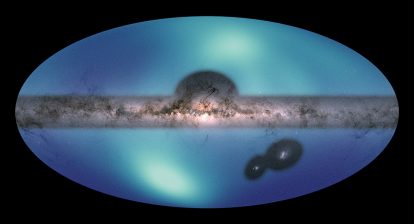The story actually begins almost 14 billion years ago, when our Universe came into being, but we are going to take it up in 1948, when Ralph Alpherin, while doing research on the Big Bang, together with Robert Herman and George Gamow, predicted the Cosmic Microwave Background (CMB).
The Big Bang Theory postulates that 12 to 14 billion years ago, our universe was only a few millimetres across. From this hot dense state, it expanded into the vast and much cooler cosmos we currently inhabit. The theory suggests that when the gases cooled, the universe was filled with radiation that is “literally the remnant heat left over from the Big Bang”, called the Cosmic Microwave Background or CMB.
Move forward to 1964, when Arno Penzias, and Robert Wilson at the Bell Telephone Laboratories in Murray Hill, New Jersey, were building a radio receiver that they intended to use for radio astronomy and satellite communication experiments. However, something was acting as a source of excess noise in the receiver. At first, they put down the disturbance to the droppings of a pair of pigeons roosting on the antenna, and had it extensively cleaned. This still did not get rid of the noise.
Meanwhile, Robert Dicke and other researchers at the nearby Princeton University were devising an experiment to find the CMB. Having rejected all possible sources for the noise, Penzias contacted Robert Dicke, who suggested that it might be the predicted background radiation. It was. Both teams published papers in 1965 and Penzias and Wilson shared the 1978 Nobel Prize in physics for their discovery.
The CMB is invisible to humans because it is so cold, just 2.725 degrees above absolute zero (-459.67 degrees Fahrenheit, or – 273.15 degrees Celsius). As such, its radiation is most visible in the microwave part of the electromagnetic spectrum. However, it fills the whole universe and can be found everywhere we look. Because it was emitted 13.7 billion years ago, only a few hundred thousand years after the Big Bang, long before stars or galaxies ever existed, studying its properties in detail are helping us understand the conditions in the early Universe.
Which brings us to the iconic image, created out of nine years of data collected by the Wilkinson Microwave Anisotropy Probe (WMAP), which operated from 2001 to 2010.

WMAP Satellite NASA
WMAP’s measurements played a key role in establishing the current Standard Model of Cosmology. The image reveals 13.77 billion year old temperature fluctuations (shown as colour differences) that correspond to the seeds that grew to become galaxies. It is helping cosmologists learn about the origin and structures of galaxies, and measure the basic parameters of the Big Bang Theory.

CMB image by WMAP NASA
And what we have learned is that the young Universe — before there were stars, planets or galaxies — was denser and much hotter, filled with a plasma of ionized hydrogen. Expansion resulted in the plasma and radiation cooling down, and the protons and electrons combined to form hydrogen atoms. While before it was opaque, it now became transparent and photons began to travel freely through space instead of being scattered by the earlier electrons and photons.
(Video l Stunning Deep Field View of the Universe by NASA’s Hubble Telescope)
The WMAP image takes us back to 380,000 years after the Big Bang. But then in 2013, ESA’s Planck space telescope, which replaced WMAP, perfected that picture and gave us the most detailed map ever created of the cosmic microwave background, using over 15 months of data. The new image told us that the Universe is not the same in all directions, and so much more.
According to ESA, “It shows tiny temperature fluctuations that correspond to regions of slightly different densities, representing the seeds of all future structure: the stars and galaxies of today.”
Look at that image. It is our Universe when it was a baby. We are the result of that expansion.

Cosmic Microwave Background – Planck Image European Space Agency
And here are the 2018 Planck maps in Intensity, from 30 to 857 GHz [July 2018]
![The 2018 Planck maps in Intensity, from 30 to 857 GHz [July 2018]](https://www.360onhistory.com/wp-content/uploads/2019/06/Screenshot-2024-11-01-142157.jpg)
The 2018 Planck maps in Intensity, from 30 to 857 GHz [July 2018]. Credit: ESA
(An X-ray image of half the universe)
Featured image: Cosmic Microwave Background ESA/ Planck telescope








Annette, 3 Little Buttons
Wow, that’s absolutely fascinating. It’s hard to imagine the universe ever being just a few millimetres across. It really makes you think, doesn’t it. Thanks so much for bringing these facts to the #dreamteam this week.